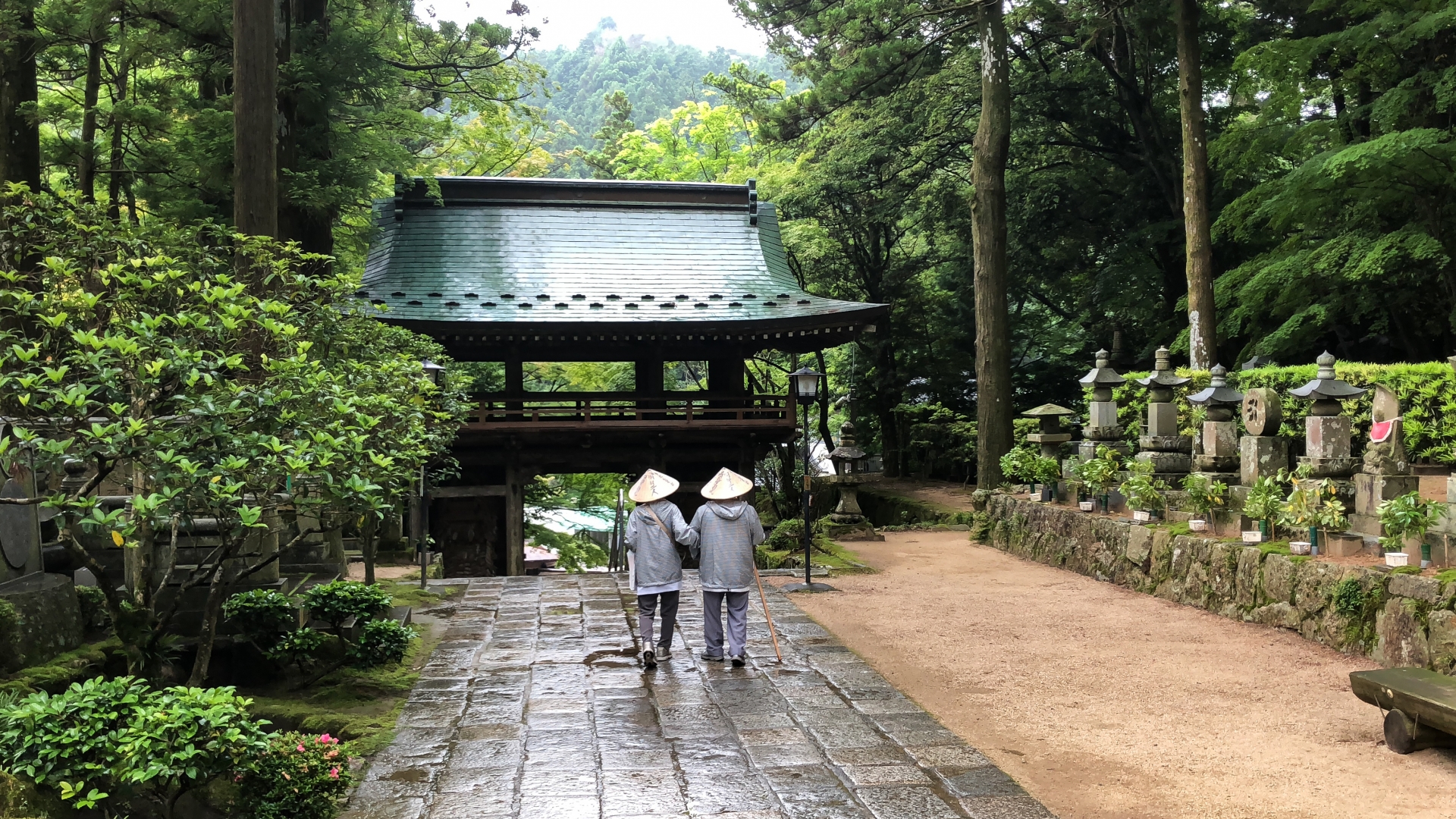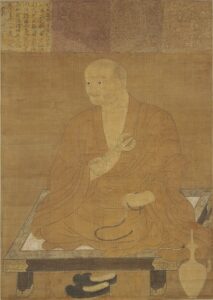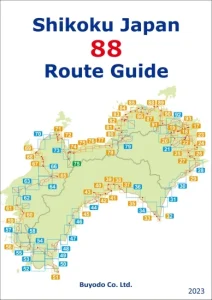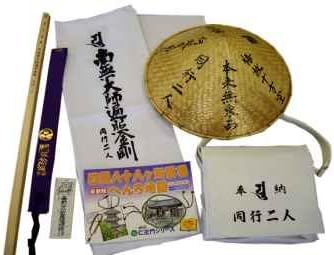Have you ever craved a journey that transcends the physical, a walk that nourishes your soul and revitalizes your spirit? Look no further than the OHENRO, the Shikoku 88 temples pilgrimage. This ancient path, winding through the scenic island of Shikoku in Japan, is more than just a trek; it’s a transformative experience, a chance to reconnect with your inner self and discover a profound sense of peace.
This comprehensive guide is your roadmap to embarking on this life-changing journey. Within these pages, you’ll discover the secrets of the OHENRO, debunk common myths, and learn the intricate details of each step, from planning your pilgrimage to embracing its transformative power.
For years, I yearned for a sense of purpose and a deeper connection to something greater than myself. The anxieties of modern life weighed heavily upon me, and I sought a way to escape the mental and spiritual turmoil. Through the OHENRO, I discovered a haven, a path to inner peace and self-discovery.
This guide is a culmination of my own pilgrimage experience, years of dedicated research, and insights from seasoned Henro (pilgrims). It offers a step-by-step roadmap, guiding you through each phase of this sacred journey. Whether you’re a seasoned spiritual seeker or simply curious about this unique pilgrimage, this guide will equip you with the knowledge and confidence to embark on your own OHENRO adventure.
History, Tradition, and Cultural Significance
The OHENRO pilgrimage dates back to the 9th century, inspired by the life and teachings of the Buddhist monk Kukai, also known as Kobo Daishi. Seeking enlightenment, Kukai embarked on a journey through Shikoku, founding and consecrating 88 temples along the way. These temples became sacred sites, attracting pilgrims from all over Japan who sought to follow in Kukai’s footsteps and attain spiritual enlightenment.
Over time, the OHENRO evolved into a deeply ingrained cultural tradition. It became a symbol of perseverance and devotion, with pilgrims undertaking the arduous journey to seek blessings, pray for loved ones, and find inner peace. Today, the OHENRO continues to attract thousands of pilgrims each year, both from Japan and abroad, offering a unique opportunity to experience Japanese culture and spirituality firsthand.
Reversing misconceptions (myths) about the pilgrimage
Many myths and misconceptions surround the OHENRO, often deterring potential pilgrims. Let’s dispel these myths and shed light on the truth about this transformative journey.
Myth: The OHENRO is only for the elderly and physically fit.
Reality: While physical stamina is helpful, the OHENRO is truly for everyone. Pilgrims of all ages and abilities can participate, whether by walking, utilizing public transportation, or even cycling. The journey is about dedicating your time and spirit, not solely your physical strength.
Myth: The OHENRO requires extensive knowledge of Buddhism and Japanese culture.
Reality: While understanding the cultural and religious context enriches the experience, it’s not a prerequisite. The OHENRO welcomes pilgrims of all faiths and backgrounds, offering a universal opportunity for spiritual exploration and inner peace.
Myth: The OHENRO is a solitary journey.
Reality: While introspection and self-reflection are crucial aspects of the OHENRO, you’ll encounter a vibrant community of fellow pilgrims along the way. Sharing meals, stories, and experiences fosters a sense of camaraderie and support, enriching the entire pilgrimage.
The OHENRO journey is meticulously structured, with each step designed to lead you to spiritual growth and enlightenment.
Next, let’s take a glimpse at the major stages of the pilgrimage.
What is OHENRO Journey?
Visiting the temples:
Each of the 88 temples offers unique experiences. Follow the rituals, receive blessings, and chant the sacred mantra “Namu Daishi Henjo Kongo.”
Walking the path:
Immerse yourself in the natural beauty of Shikoku. Embrace the challenges and find moments of stillness and contemplation.
Connecting with fellow pilgrims:
Share meals, stories, and experiences, fostering a sense of community and support.
Completion(Reaching temple 88):
Celebrate your achievement with fellow pilgrims and reflect on your inner transformation.
Returning home:
Carry the lessons learned throughout your life, integrating the newfound peace and clarity into your daily routine.
There is a continuation to OHENRO Journey
The OHENRO’s impact extends far beyond the completion of the pilgrimage. It’s a continuous journey of personal growth and spiritual development. Here’s how to maintain the transformative power of the OHENRO.
Practice mindfulness:
Integrate meditation and other mindfulness techniques into your daily life to cultivate inner peace and clarity.
Engage in spiritual activities:
Continue chanting the sacred mantra, offering prayers, or participating in Buddhist practices.
Live with compassion:
Extend kindness and understanding to others, embodying the spirit of the OHENRO in your interactions.
Share your experiences:
Inspire others by sharing your pilgrimage story and encouraging them to embark on their own journey of self-discovery.
Pilgrimage Style, Period, and Route
The OHENRO can be undertaken in various ways, catering to individual preferences and physical capabilities. Here are the three main pilgrimage styles.
- Walking: This traditional approach offers the most immersive experience, allowing you to connect with the landscape and engage in mindful reflection. However, it requires good physical fitness and sufficient time (approximately 40-60 days).
- Cycling: This option provides a faster and less physically demanding way to complete the pilgrimage. It’s a good choice for those who want to cover more ground but still enjoy the scenery.
- Public Transportation: This is the most convenient option for those with limited time or physical restrictions. It allows you to visit all the temples without the physical exertion of walking or cycling.
The length of the pilgrimage depends on the style chosen. Typically, it takes 40 to 60 days on foot, 20 to 30 days by bicycle, and 10 to 15 days by public transportation. Depending on available time and preference, the pilgrimage can be shortened or extended.
There is no set route for the pilgrimage. It does not matter where you start or if you do not visit all the sites at once. You can go at your own pace according to your time and physical strength.
The orthodox way is to visit the temples in order of number, starting from No. 1.
If you visit the temples in a leap year, you will receive the same amount of benefits as if you visit the temples in order three times. The other is called “kiri-uchi,” or “ichikkoku mairi,” which means to visit each prefecture separately, and the overwhelming majority of visitors nowadays do so in the “kiri-uchi” style. The majority of people now visit shrines in the “kujiri-uchi” style.
What style of pilgrimage is best depends on personal preference and physical ability. However, for a truly transformative experience, walking is recommended. Although physically demanding, walking the ancient paths, experiencing the beauty of Shikoku’s natural environment, and immersing oneself in deep reflection will reap incomparable rewards.
What to Wear and What to Bring
Proper clothing and gear are essential for a comfortable and safe pilgrimage. Here’s what you’ll need.
Clothing:
- White robe (hakui): This traditional garment is worn by all Henro and symbolizes purity and devotion. You can purchase one at a temple or shop specializing in pilgrimage supplies.
- Comfortable walking shoes: Choose shoes that are supportive and offer good traction for uneven terrain.
- Breathable and moisture-wicking clothing: Opt for clothes made from natural materials like cotton or wool to stay comfortable during walks.
- Rain gear: Pack a lightweight raincoat and rain pants to protect yourself from unexpected showers.
- Warm layers: Evenings and mornings can be chilly, so bring a fleece jacket or sweater to stay warm.
- Hat and sunglasses: Protect yourself from the sun with a hat and sunglasses.

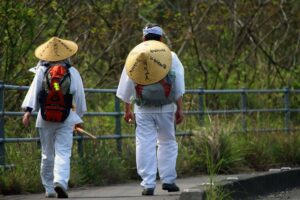
Gear:
- Backpack: Choose a comfortable backpack that has enough space for all your essentials.
- Walking sticks: These can be helpful for providing stability and support, especially on longer walks.
- Water bottle: Stay hydrated by carrying a reusable water bottle.
- First-aid kit: Be prepared for minor injuries with a small first-aid kit.
- Flashlight or headlamp: Having a light source is essential for walking in the dark.
- Guidebook and map: A guidebook will provide information about the temples and route, while a map will help you navigate.
- Stamp book (nōkyōchō): This is a special book where you collect stamps from each temple.
- Name slips (osamefuda): These are small slips of paper where you write your name and prayer requests.
- Incense and candles: These are used for offerings at the temples.
Obtaining Your Gear:
- You can purchase most of the necessary gear at shops in Shikoku that specialize in pilgrimage supplies.
- You can also find some items online, particularly the white robe and guidebooks.
- Some temples offer rental services for walking sticks and backpacks.
- It’s recommended to purchase your white robe and stamp book before arriving in Shikoku, as these items are essential from the beginning of your pilgrimage.
Additional Tips:
- Pack light. You’ll be carrying your belongings on your back, so it’s important to pack only what you need.
- Label your belongings. This will help you keep track of your things and prevent them from getting lost.
- Bring cash. Many shops and restaurants in Shikoku only accept cash.
- Learn some basic Japanese phrases. This will help you communicate with locals and make your pilgrimage more enjoyable.
Pilgrimage Accommodations
When making a pilgrimage to the 88 pilgrimage sites in Shikoku, it is very important to make arrangements for lodging. It is difficult to predict the schedule of a pilgrimage. Therefore, in most cases, reservations are made the day before or the day of the tour. If you cannot arrange accommodations in an unfamiliar place (and on country roads), you will feel very uneasy, so you should prepare a list of accommodations in advance.
The following page provides a list of the latest information (2024 edition) on the best accommodations for pilgrims to the 88 pilgrimage sites in Shikoku (OHENRO san). However, many inns have been closed since the Corona disaster, so it is wise to check again locally.
Updated List of the Best Accommodations for Pilgrimage to 88 Places in Shikoku (OHENRO san)
※In production, comming soon!
Finally
Remember, the OHENRO is a journey of self-discovery. There are no right or wrong ways to do it. Pack what feels essential to you, and be open to the transformative experience that awaits.
Have a safe and fulfilling OHENRO pilgrimage!
Reference Sites:
- Shikoku Tourism: https://shikoku-tourism.com/feature/henro/top
- Shikoku 88 Temple Website: https://shikokutours.com/
- Shikoku Henro Pilgrimage Association: https://henro.co/
- Japan National Tourism Organization: https://www.japan.travel/jp/

